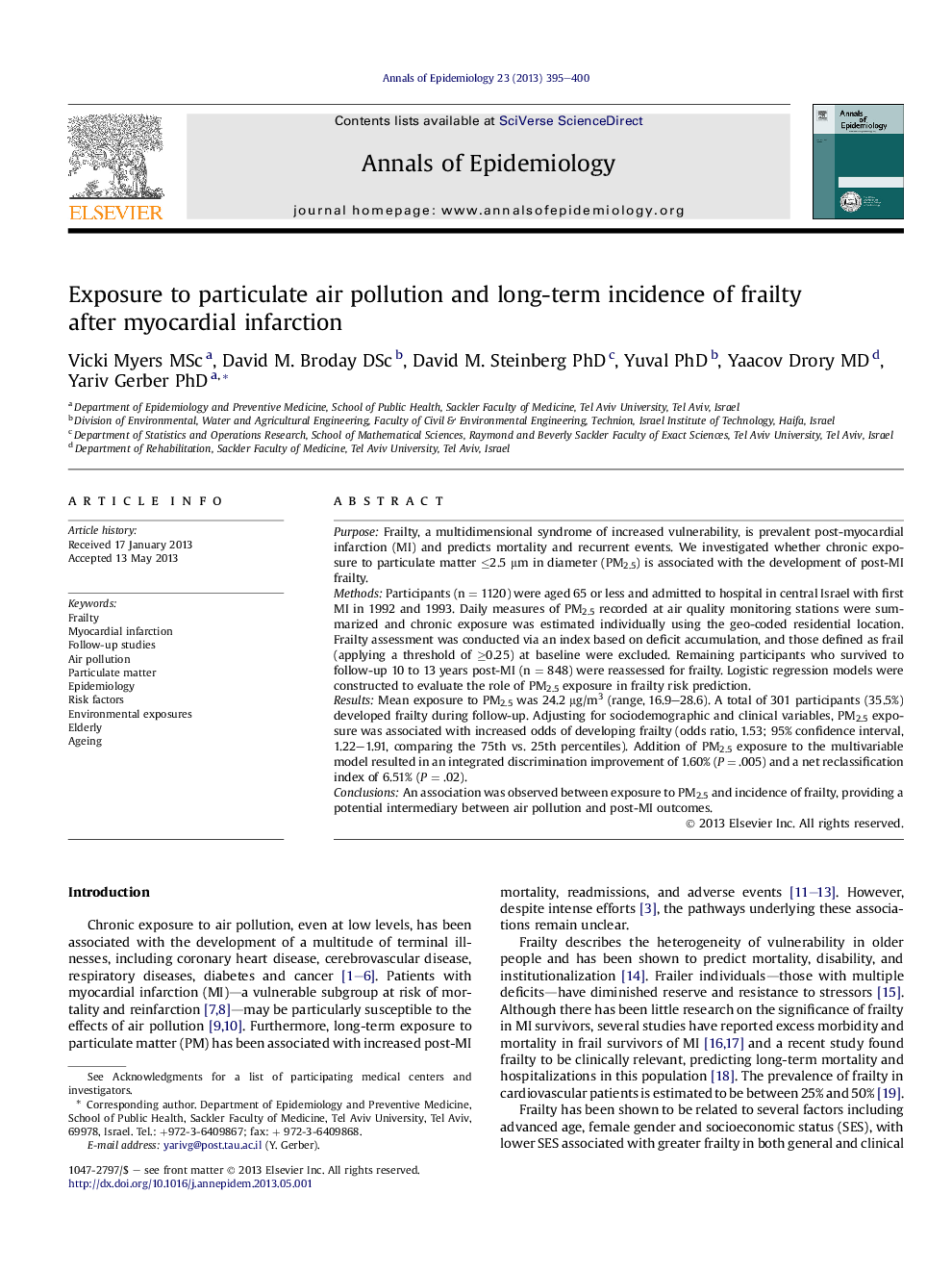| Article ID | Journal | Published Year | Pages | File Type |
|---|---|---|---|---|
| 3444138 | Annals of Epidemiology | 2013 | 6 Pages |
PurposeFrailty, a multidimensional syndrome of increased vulnerability, is prevalent post-myocardial infarction (MI) and predicts mortality and recurrent events. We investigated whether chronic exposure to particulate matter ≤2.5 μm in diameter (PM2.5) is associated with the development of post-MI frailty.MethodsParticipants (n = 1120) were aged 65 or less and admitted to hospital in central Israel with first MI in 1992 and 1993. Daily measures of PM2.5 recorded at air quality monitoring stations were summarized and chronic exposure was estimated individually using the geo-coded residential location. Frailty assessment was conducted via an index based on deficit accumulation, and those defined as frail (applying a threshold of ≥0.25) at baseline were excluded. Remaining participants who survived to follow-up 10 to 13 years post-MI (n = 848) were reassessed for frailty. Logistic regression models were constructed to evaluate the role of PM2.5 exposure in frailty risk prediction.ResultsMean exposure to PM2.5 was 24.2 μg/m3 (range, 16.9–28.6). A total of 301 participants (35.5%) developed frailty during follow-up. Adjusting for sociodemographic and clinical variables, PM2.5 exposure was associated with increased odds of developing frailty (odds ratio, 1.53; 95% confidence interval, 1.22–1.91, comparing the 75th vs. 25th percentiles). Addition of PM2.5 exposure to the multivariable model resulted in an integrated discrimination improvement of 1.60% (P = .005) and a net reclassification index of 6.51% (P = .02).ConclusionsAn association was observed between exposure to PM2.5 and incidence of frailty, providing a potential intermediary between air pollution and post-MI outcomes.
